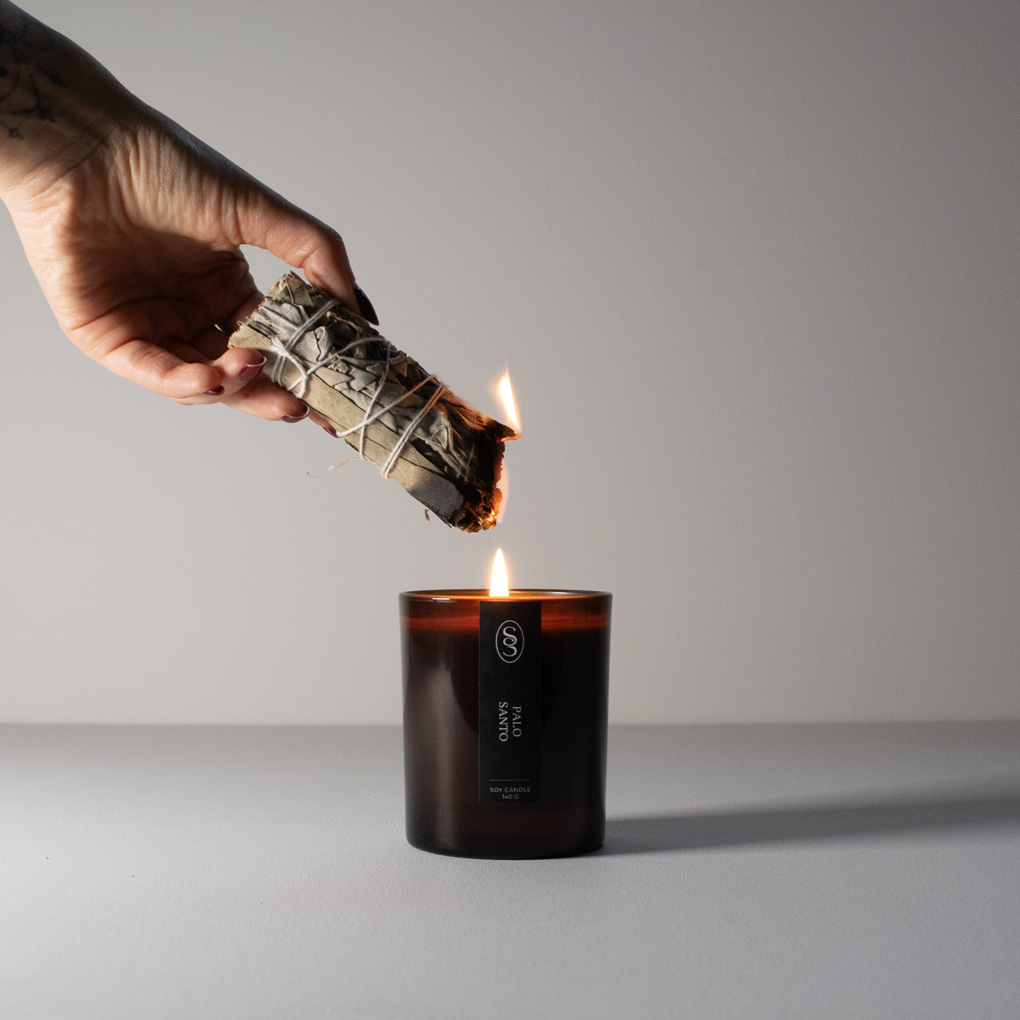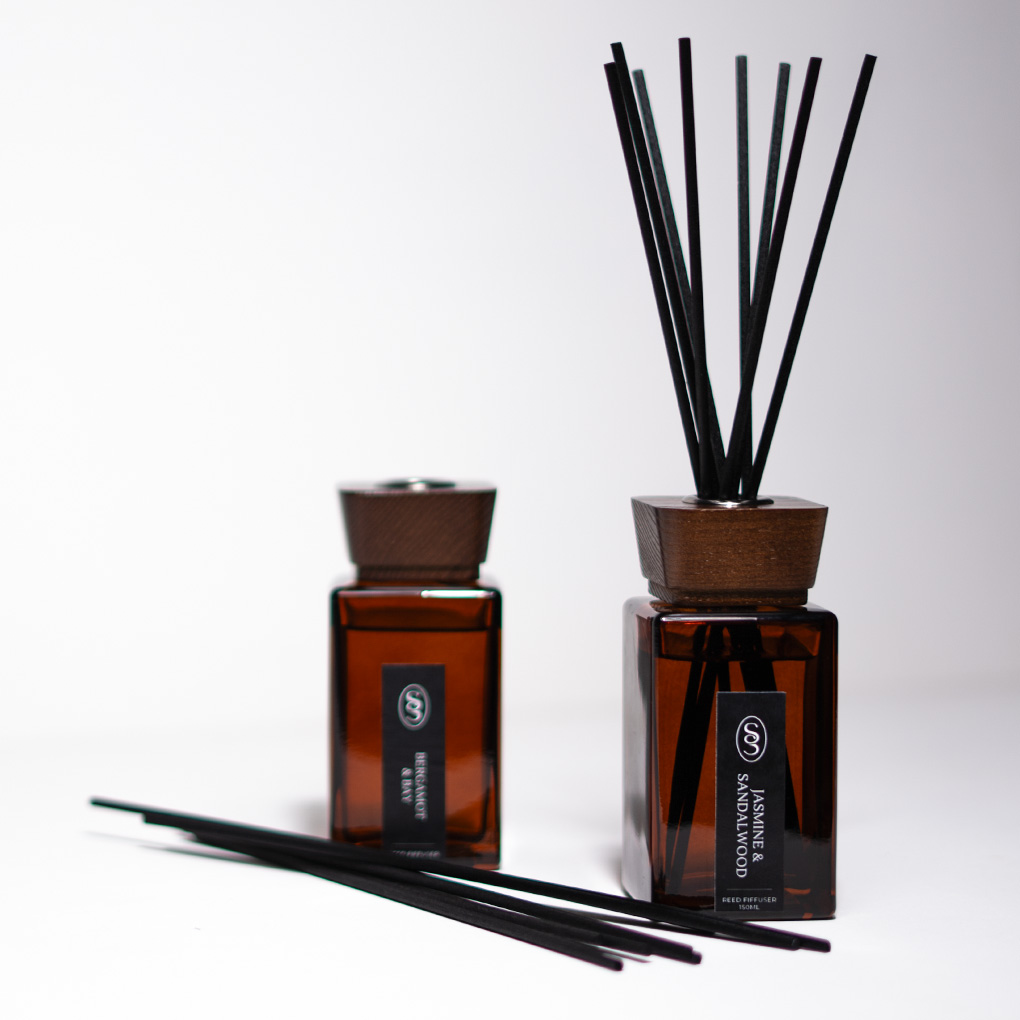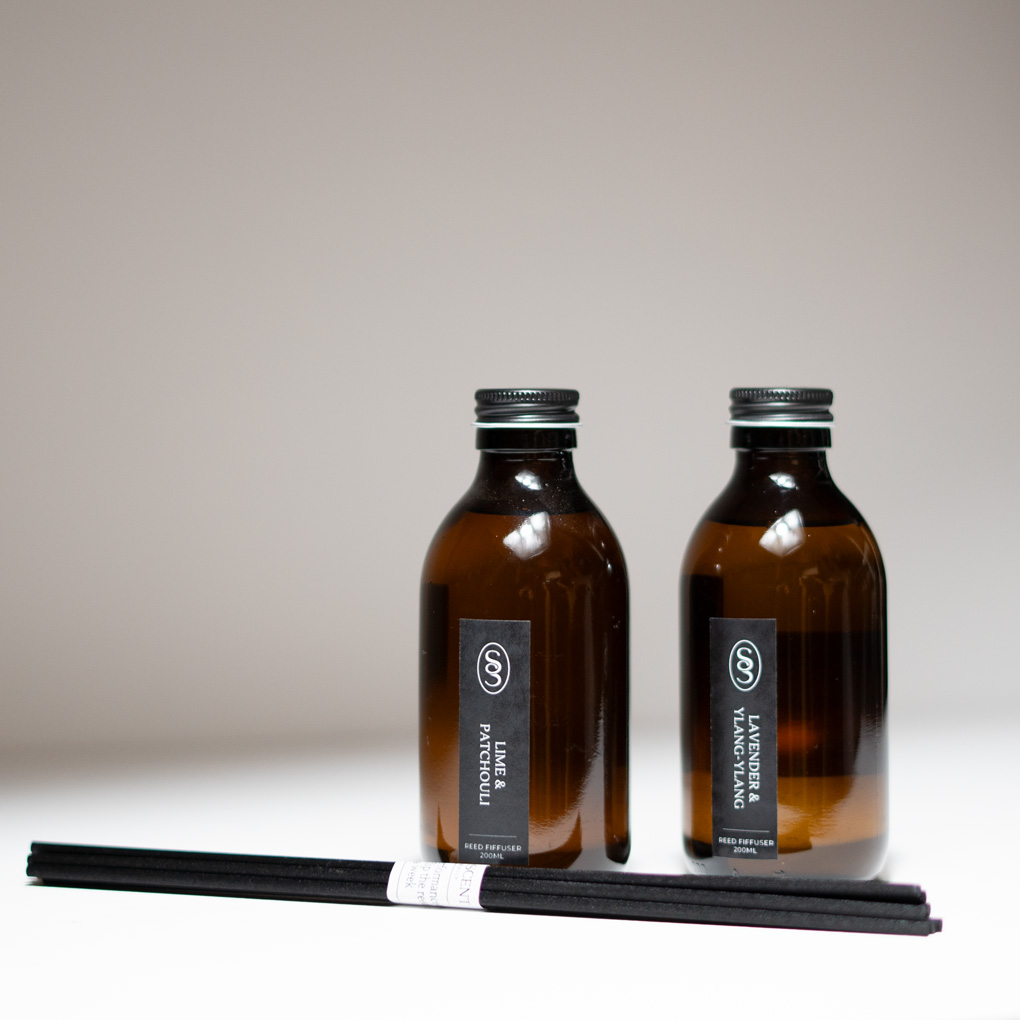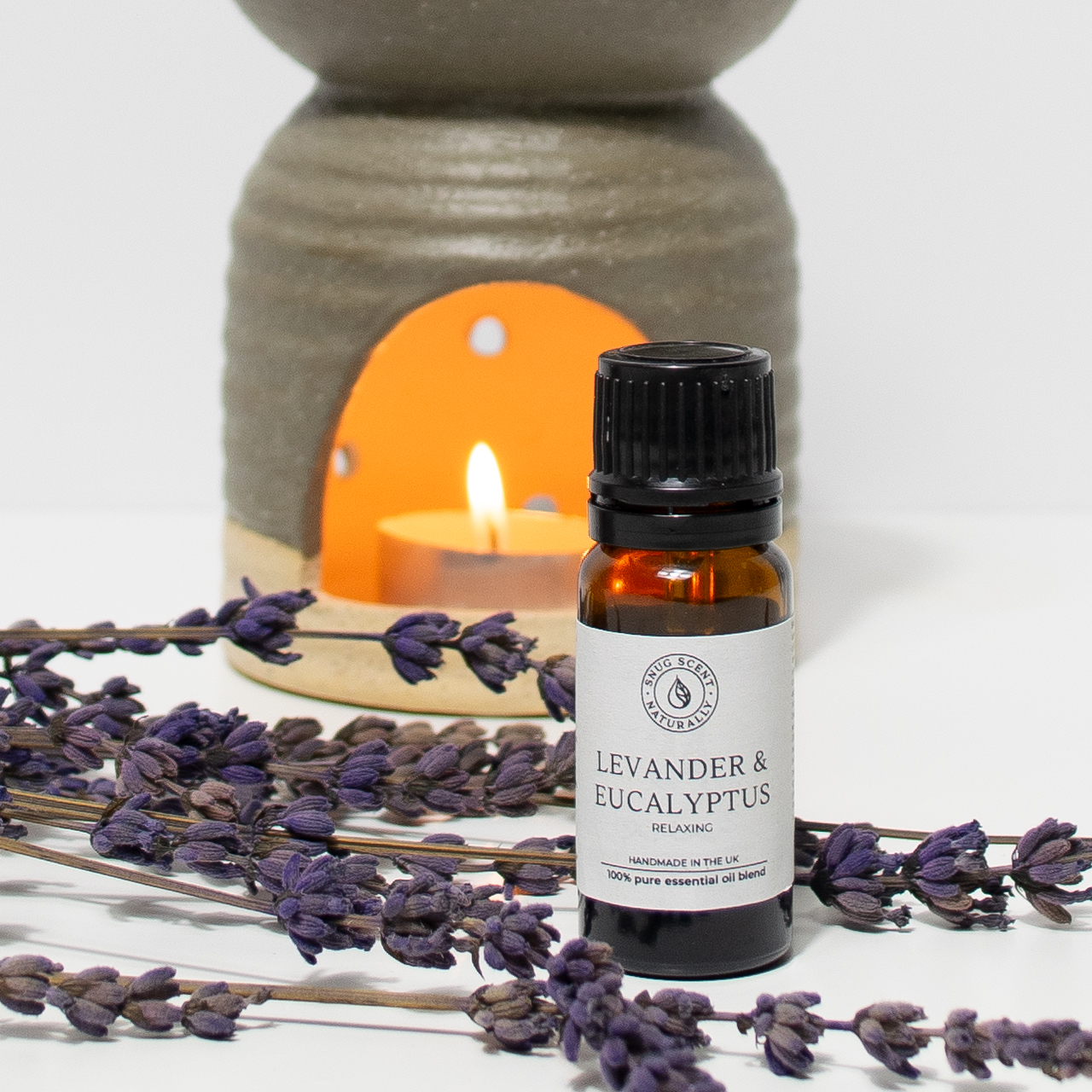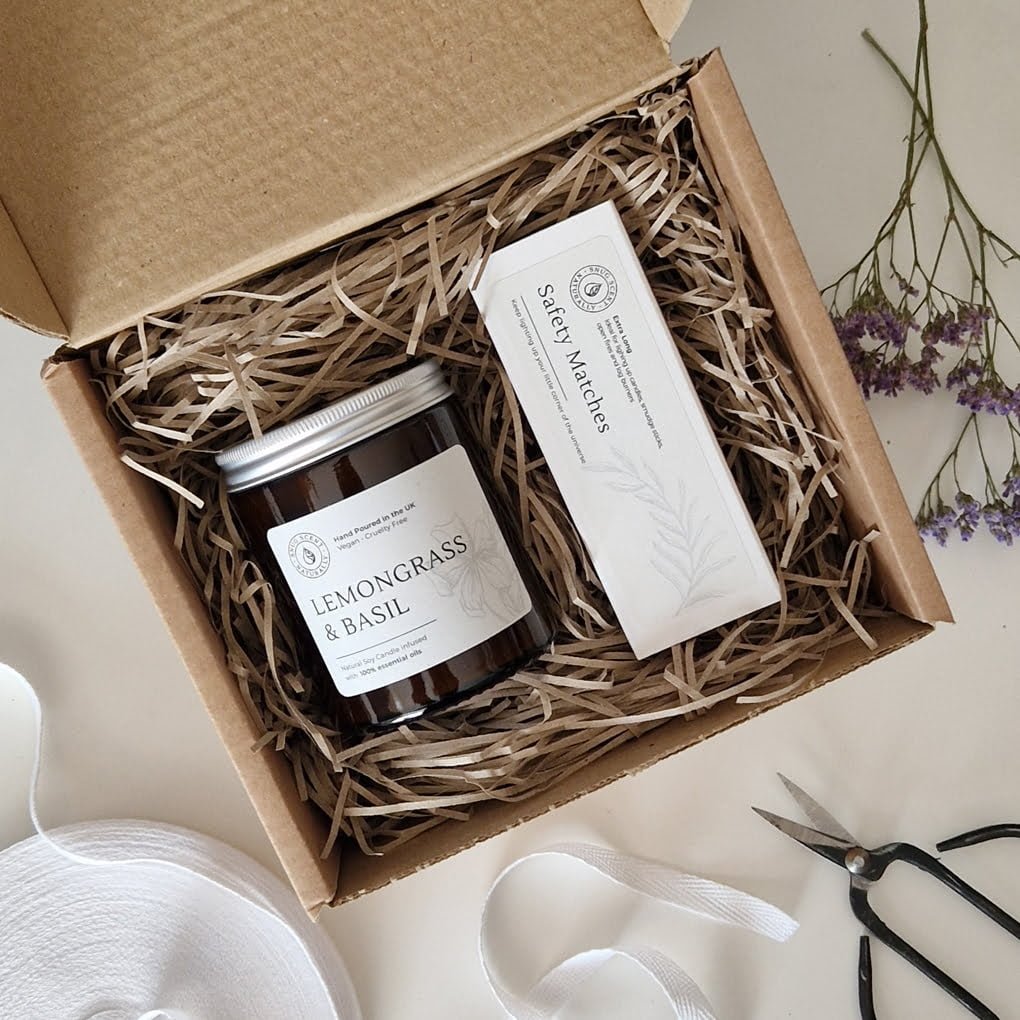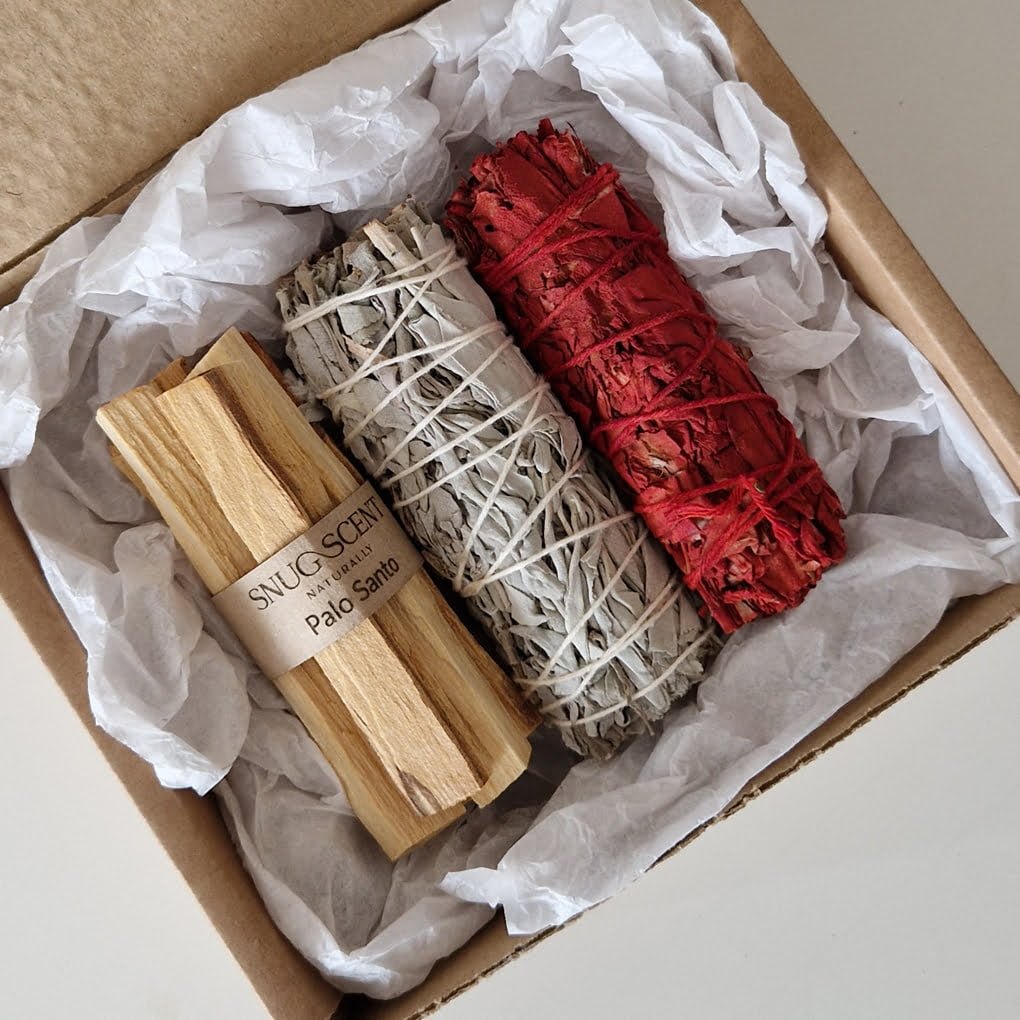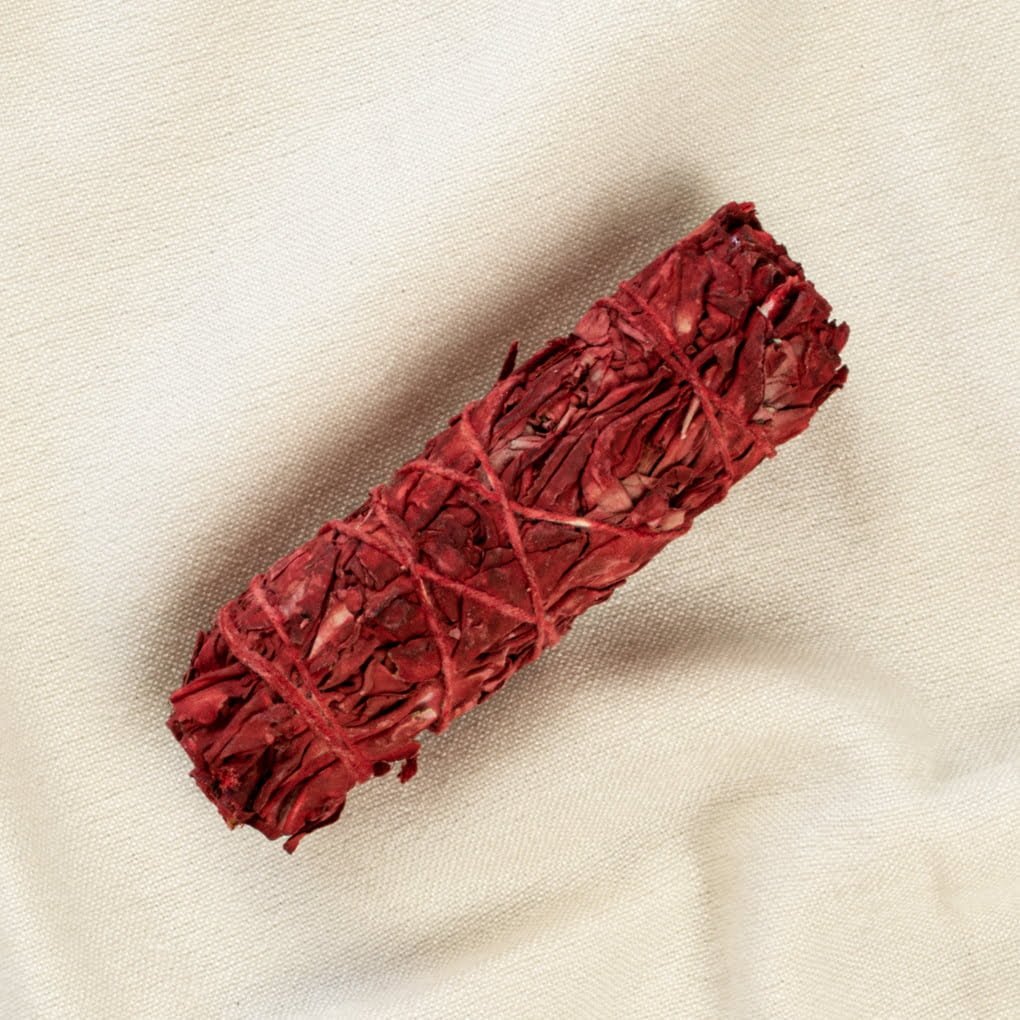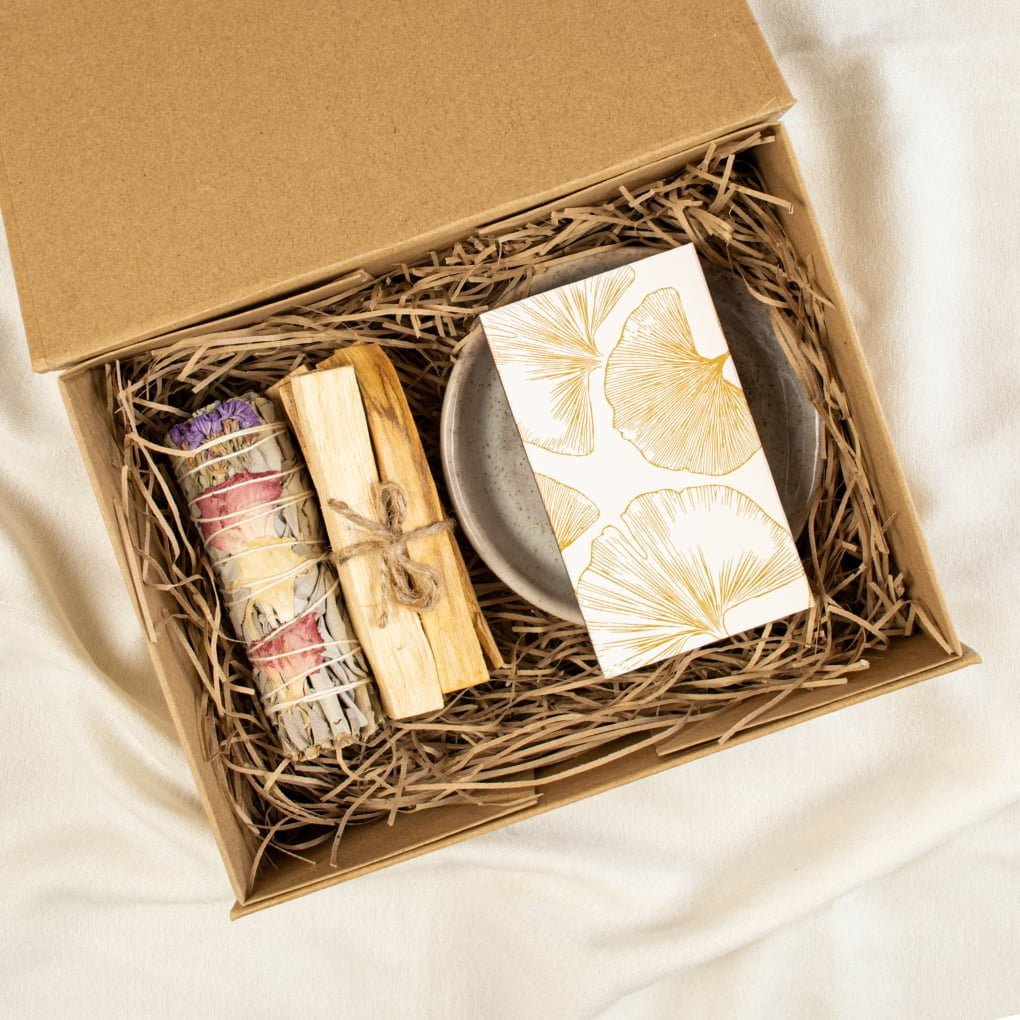About Reed Diffusers
Reed Diffusers: All You Need To Know When Choosing One
Reed diffusers are a popular choice for those seeking a long-lasting, flameless way to scent their homes. These elegant devices offer a continuous fragrance without the need for electricity or open flames, making them a safe and convenient option for any room. In this comprehensive guide, we’ll explore what reed diffusers are, how they work, their ingredients, and the aspects of choosing the best one for your home.
What Are Reed Diffusers?
Reed diffusers have three main components: a vessel, scented liquid, and reeds. The vessel, typically made of glass, holds the fragrant oil. Reeds, a thin sticks made from natural or synthetic materials, that are placed in the oil. These reeds absorb the scented liquid and disperse it into the air, filling your space with a pleasant aroma. Reed diffusers offer several advantages over other home fragrance methods:
Reed Diffusers vs Other Home Fragrance Methods
Aroma diffusers offer several advantages over other home fragrance methods:
- Unlike candles, they don’t require an open flame, making them safer.
- They provide continuous fragrance without the need for electricity, unlike plug-in air fresheners.
- Diffusers last longer than most spray air fresheners.
- They offer a more subtle, consistent scent compared to incense.
How Do Reed Diffusers Work?
The science behind reed diffusers is simple yet effective. The reeds contain tiny channels that draw up the scented oil through capillary action. As the oil reaches the top of the reeds, it evaporates into the air, releasing its fragrance. This process continues as long as there’s oil in the vessel, the reeds remain unclogged, and the viscosity of the liquid stays relatively low. To maintain optimal performance, it’s recommended to flip the reeds every few weeks. This ensures that both ends of the reeds have a chance to absorb and disperse the fragrance, keeping the scent fresh and strong.
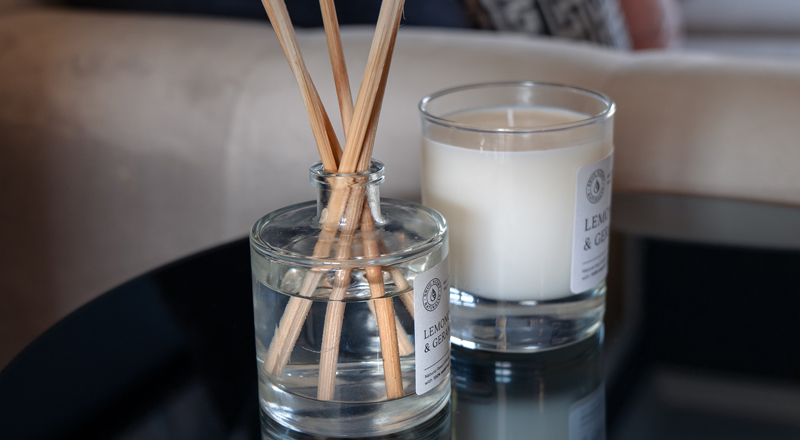
Ingredients in Reed Diffusers
The ingredients used in reed diffusers can vary widely, from synthetic chemicals to pure essential oils. Understanding these ingredients is crucial for those seeking the most desirable product for their home.
Synthetic Ingredients
Many commercial reed diffusers contain synthetic fragrances and chemicals. Common synthetic ingredients include:
- Glycol ethers: Glycol ethers are chemical solvents made from crude oil, valued for their ability to dissolve many different materials. You’ll often find them in everyday products like paints, cleaners, and cosmetics, though some types can be more harmful than others if not handled properly.
- Petroleum distillates: Petroleum distillates are chemicals made from refining crude oil. They are commonly used as solvents in paints, glues, and cleaners. Different types exist, with some more likely to evaporate quickly or cause health and environmental issues if not used properly.
- Ethanol: Ethanol is a colourless, flammable alcohol commonly used as a solvent, fuel, and in alcoholic beverages. It is produced through the fermentation of sugars by yeast or via petrochemical processes and is widely used in industries like pharmaceuticals, cosmetics, and cleaning products.
- Isopropanol: Isopropanol, or isopropyl alcohol, is a colourless, flammable liquid widely used as a solvent, disinfectant, and antiseptic in products like hand sanitisers and cleaning agents. It evaporates quickly, making it effective for cleaning surfaces and medical applications due to its ability to kill bacteria and viruses.
While these synthetic ingredients can produce strong scents, they may pose health risks. Some synthetic fragrances contain phthalates, VOCs and other chemicals that can contribute to indoor air pollution and cause irritations.
Natural Ingredients
For those seeking non-toxic aromas, natural reed diffusers offer a healthier alternative. These typically contain:
• Pure essential oils or extracts (such as lavender, eucalyptus, and citrus)
• Carrier oils (like fractionated coconut oil, glycerin-based base)
Natural reed diffusers, made from pure essential oils, are a safer option for creating a toxin-free home. They offer a variety of non-toxic aromas that not only smell great but can also benefit mood and overall well-being.
Synthetic vs Natural Reed Diffusers
When choosing a reed diffuser, it’s important to consider the differences between synthetic and natural options.
| Aspect | Synthetic Reed Diffusers | Natural Reed Diffusers |
|---|---|---|
| Ingredients | Synthetic oils, glycol | Pure essential oils |
| Health Characteristics | Potentially toxic | Usually allergen-free |
| Longevity | Weeks to Months | Weeks to Months |
| Fragrance Strength | Strong | Mild to Moderate |
| Environmental Impact | Higher | Lower |
| Cost | Generally lower | Generally higher |
Synthetic reed diffusers often provide stronger scents and may be less expensive. However, they can contain potentially harmful chemicals and have a shorter lifespan. On the other hand, natural reed diffusers are crafted from chemical-free, vegan-friendly ingredients. They support a non-toxic environment and release beneficial aromas, all while safeguarding your health. While they may be more expensive and have a milder scent, they typically last longer and offer additional therapeutic benefits.
Scent Availability of Natural and Synthetic Reed Diffusers
Natural Reed Diffusers
Natural reed diffusers are crafted using pure essential oils and other naturally derived ingredients. This approach offers a range of scents that are often inspired by nature, such as floral, herbal, and citrus notes. The availability of scents in natural reed diffusers is typically influenced by the types of essential oils that can be sustainably sourced and blended.
- Variety and Inspiration: Many natural reed diffusers are inspired by seasonal changes or specific geographical regions, such as the English countryside, offering a unique aromatic experience.
- Aromatherapy Benefits: Each scent blend in natural reed diffusers is often designed to provide specific aromatherapy benefits, enhancing the atmosphere and well-being.
- Limitations: While natural reed diffusers offer a diverse range of scents, they may not capture certain complex or synthetic fragrances that some consumers desire.
Synthetic Reed Diffusers
Synthetic reed diffusers use artificially created fragrances, which allows for a broader spectrum of scent options. These fragrances can replicate almost any aroma, including those not found in nature.
- Wide Range of Scents: Synthetic reed diffusers can offer various scents, from traditional floral and fruity notes to more exotic or unique combinations.
- Consistency and Strength: The scent profile of synthetic reed diffusers tends to be more consistent over time, providing a strong and long-lasting fragrance.
- Customization Potential: The ability to create bespoke scents means synthetic options can cater to niche preferences and trends that may not be feasible with natural ingredients.
In summary, while natural reed diffusers provide a more limited but authentic range of scents with added aromatherapy benefits, synthetic reed diffusers offer greater versatility and consistency in fragrance options. The choice between the two depends on personal preference for natural authenticity versus the breadth and strength of scent variety.
Benefits of Natural and Synthetic Reed Diffusers
Choosing natural reed diffusers for your home offers numerous benefits:
- Non-toxic Environment: Natural reed diffusers help create a toxic-free home by avoiding harmful synthetic chemicals.
- Aromatherapy Benefits: Essential oil reed diffusers can provide therapeutic effects, such as stress relief, improved mood, and better sleep.
- Pet-friendly: Natural aroma diffusers are usually considered safe for pets if used according to the instructions and are not misused.
- Longer Lasting: Natural reed diffusers often last longer than their synthetic counterparts, providing months of continuous fragrance.
- Eco-friendly: Botanical reed diffusers are more environmentally friendly, using sustainable ingredients and often in recyclable packaging.
- Versatility: Essential oil blends can be customised to create unique scents tailored to your preferences or needs.
Some benefits of synthetic reed diffusers include:
- Stronger fragrance: Synthetic scents often provide a more potent aroma that can fill larger spaces more effectively.
- Longer-lasting scent: The chemical composition of synthetic fragrances can result in a scent that lingers for extended periods.
- Wider variety of scents: Synthetic options offer a broader range of fragrances, including those that can’t be replicated with natural oils.
- Cost-effectiveness: Synthetic reed diffusers are generally less expensive than their natural counterparts.
It’s important to note that while synthetic reed diffusers offer these benefits, they may not align with the goals of those seeking a toxic-free home environment. Consider your personal preferences and health concerns when choosing synthetic and natural options.
Environmental Impact of Reed Diffusers
The environmental impact of reed diffusers varies depending on their composition, manufacturing process, and disposal methods. Both natural and synthetic reed diffusers have environmental considerations that consumers should be aware of.
Natural Reed Diffusers
Natural reed diffusers are often perceived as more environmentally friendly due to their use of renewable resources. The essential oils used in these diffusers are typically derived from plants, which can be sustainably harvested. Many manufacturers of natural reed diffusers also prioritise eco-friendly packaging, using recyclable or biodegradable materials. However, the environmental impact of natural reed diffusers is not entirely negligible:
- Cultivation Impact: The production of essential oils requires large quantities of plant material, which can lead to intensive farming practices.
- Water Usage: Some plants used for essential oils require significant water resources to grow.
- Transportation: Sourcing ingredients from various global locations can contribute to carbon emissions.
Synthetic Reed Diffusers
Synthetic reed diffusers, while often criticised for their use of artificial ingredients, can have some environmental advantages:
- Consistency: Synthetic fragrances can be produced with less variability, potentially reducing waste from batches that don’t meet quality standards.
- Resource Efficiency: Creating synthetic scents may require fewer raw materials than natural alternatives. However, synthetic reed diffusers also present environmental challenges.
- Unknown Toxicity: Many substances used in reed diffusers have not been thoroughly evaluated for their effects on environmental and human health. Further research must fully understand their potential impacts and ensure safe, sustainable use.
- Non-renewable Resources: Many synthetic fragrances are derived from petroleum products, a non-renewable resource.
- Persistence in the Environment: Some synthetic fragrance compounds can persist and potentially harm ecosystems.
Long-term Environmental Effects
The long-term environmental effects of reed diffusers are still being studied. While natural options may biodegrade more readily, some synthetic compounds have unknown long-term impacts on ecosystems. In conclusion, both natural and synthetic reed diffusers have environmental pros and cons. Consumers seeking to minimise their environmental impact should consider the entire product lifecycle, from sourcing and manufacturing to use and disposal. Opting for brands that prioritise sustainable practices, regardless of whether they use natural or synthetic ingredients, can help reduce overall environmental impact.
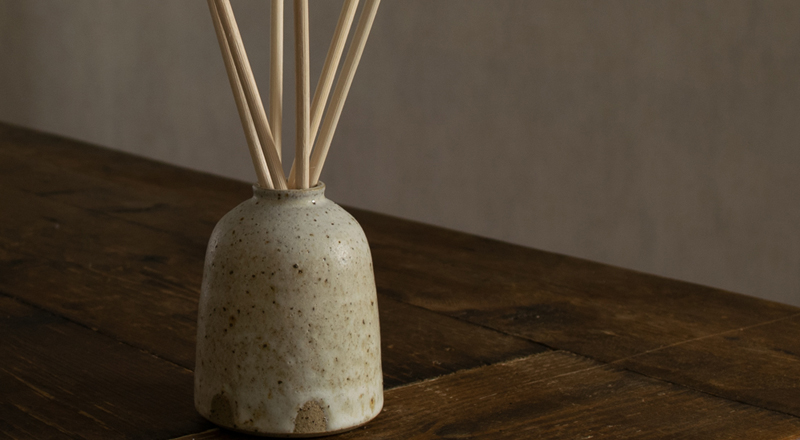
How to Choose the Best Reed Diffuser
When selecting a reed diffuser for your home, consider the following factors:
- Scent: Choose aromas that appeal to you and suit the mood you want to create in your space.
- Size: Consider the size of the room you want to scent. Larger rooms may require bigger diffusers or multiple units.
- Design: Select a vessel that complements your home decor.
If you are looking for a non-toxic reed diffuser made using sustainable materials, you should also consider its ingredients and reeds.
Reed Diffuser Safety Considerations
While reed diffusers are generally safe, it’s important to keep a few things in mind:
- Keep out of reach of children and pets. Aroma oils and the base can be harmful if ingested or if they come into direct contact with the skin.
- Avoid placing reed diffusers on delicate surfaces, as oils can potentially damage some finishes.
- If you have allergies or sensitivities, test the scent in a small area first.
- Always follow the manufacturer’s instructions for use and maintenance.
Maintaining Your Reed Diffuser
To get the most out of your reed diffuser:
- Flip the reeds every 1-2 weeks to refresh the scent.
- Replace the reeds every 8-10 weeks or when they become clogged.
- Keep the diffuser away from direct sunlight and heat sources.
- Clean the vessel thoroughly before refilling it with a new scent.
The Future of Reed Diffusers
As consumers become more health conscious and environmentally aware, the trend towards natural, non-toxic reed diffusers will likely continue. In the future, we may see more innovative designs, sustainable materials, and advanced essential oil blends.
Conclusion
Reed diffusers offer a safe, effective, and elegant way to scent your home. You can enjoy beautiful fragrances while maintaining a healthy living environment by choosing natural, non-toxic options. Whether you opt for store-bought essential oil reed diffusers or create your own, these versatile devices provide a continuous, subtle scent that can transform any space into a more pleasant and inviting atmosphere. Remember, the key to a great reed diffuser experience is selecting high-quality, natural ingredients and properly maintaining your diffuser. You can enjoy months of beautiful, non-toxic aromas in your home with the right choice.
